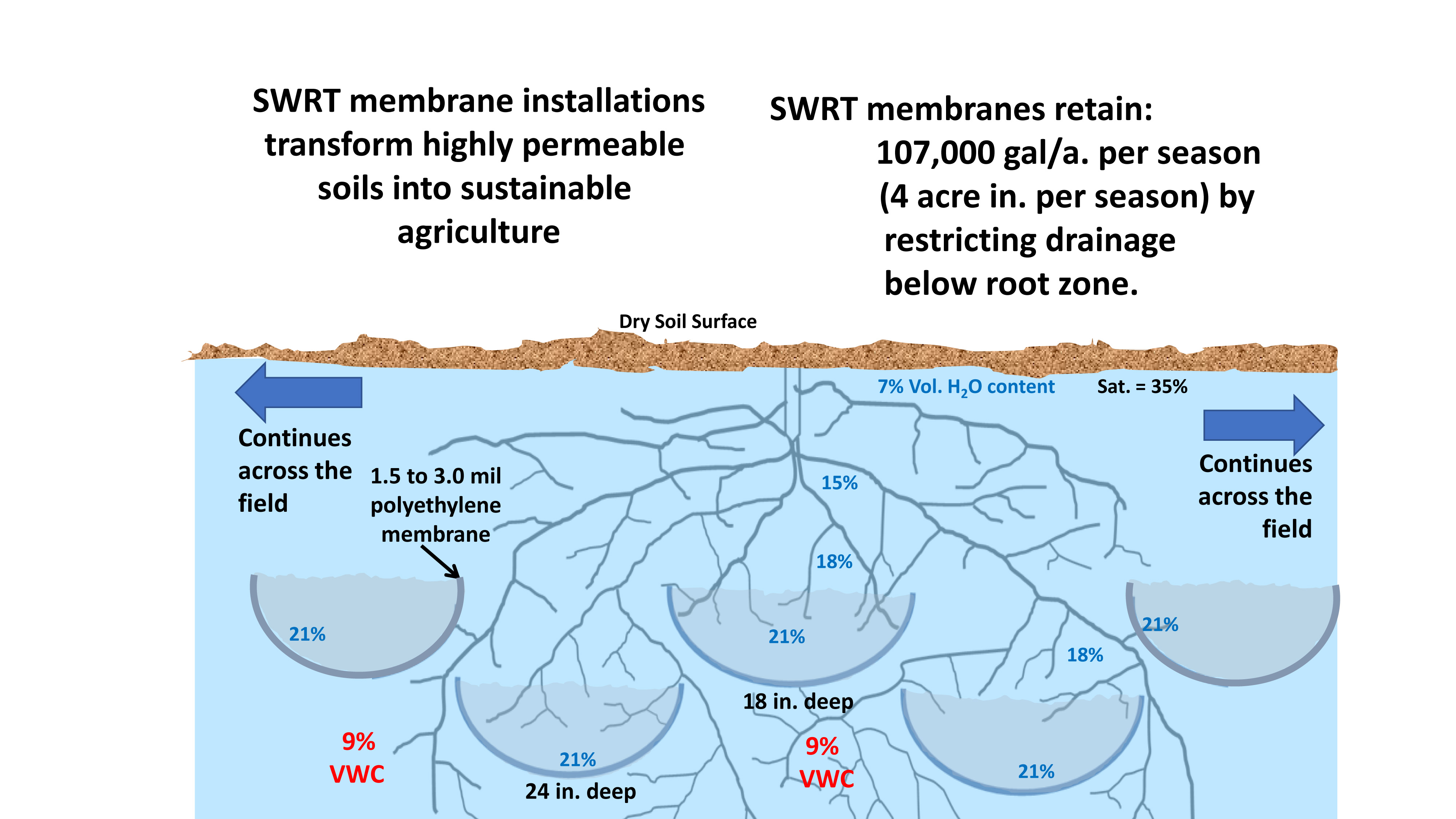This article appears in the November 2018 issue of Potato Grower.
Increasing demands for producing sustainable food and cellulosic fiber supplies on small and large farms has become the grand challenge for the 21st century. Soil water deficits rank among the highest stress limitations to plant growth and productivity. Although supplemental irrigation and increased fertilization to highly permeable soils may increase seed and biomass production in the short term, these management practices are simply not sustainable due to elevated leaching losses including nutrients, pesticides and pathogens to groundwater supplies.
New plant biotechnologies, combined with water conservation and nutrient technologies that sustain crop productivity while improving soil quality, can make water and nutrients more efficient for growers. Once water and nutrients are retained by soils, sustainable productivity of nutritious food crops and biomass can be sustained on marginal sandy and oxisolic soils.
 Historically, the installation of subsurface water retention technology (SWRT) barriers in sandy soils increased both above-ground biomass and food production with substantial reductions of irrigation water. Today’s new SWRT applications to highly permeable soils offer the potential to convert barren landscapes into highly sustainable plant production regions.
Historically, the installation of subsurface water retention technology (SWRT) barriers in sandy soils increased both above-ground biomass and food production with substantial reductions of irrigation water. Today’s new SWRT applications to highly permeable soils offer the potential to convert barren landscapes into highly sustainable plant production regions.
A new soil water retention technology has been developed by researchers at Michigan State University. It has been greenhouse- and field-tested, and has shown great potential in improving potato production quality and quantity with less water and irrigation energy. Field trials have successfully increased production of potato and corn crops by 34 and 59 percent, respectively, on farmers’ fields and university research farms in four U.S. states and three countries.
Newly designed commercial implements precisely install SWRT membranes. These water-retaining troughs, installed across fields, establish optimal soil water, soil nutrients and soil oxygen in potato root zones. Researchers believe they will also improve efficacies of nematode and root pathogen control with fewer pesticides for longer time periods, further reducing plant stress. Currently, four chisel membrane installation implements are pulled through sand and loamy sand soils at depths ranging between 24 and 18 inches. Soils receiving SWRT membranes are leveled behind each machine. Neither potato roots nor worms are able to penetrate these SWRT membranes.
During each growing season, productivity of most plants growing in sandy soils is dramatically reduced by limited availability of soil water and nutrients in their root zone. Insufficient soil water contents in the plant root zone cause severe plant wilting, along with constant leaching of necessary plant nutrients, severely limiting agricultural production on coarse-textured and highly permeable soils. Low water-holding capacities by coarse soils of most marginal drylands (receiving less than 20 inches of unevenly distributed rainfall annually) cause extremely low productivity of food and plant biomass. Although large pores within sandy and oxisolic soils absorb large quantities of rainfall, less than 20 percent is retained in the root zone. The remaining water drains more deeply into the soil, leaching most plant nutrients, E. coli, some pesticides and endocrine disruptive nano-sized materials to depths beyond the roots of most crops and into groundwater.
Plants free of water deficit events retain healthier root systems that efficiently absorb available plant nutrients, enabling plants to achieve their maximum genetic potential. In studies, SWRT membranes installed below plant root systems retain up to 95 percent of applied water where it falls, providing continuous delivery of drought-free periods up to three times longer than intensely irrigated control sands without root zone water retention membranes.
Researchers anticipate that SWRT membranes will continue to increase potato and rotational crop production for many generations. Dr. Alvin Smucker and his team are looking for producers interested in on-farm trials of SWRT, particularly those who stand to benefit greatly from the technology’s water- and nutrient-conserving benefits.
Alvin Smucker is a professor of soil biophysics at Michigan State University, as well as the founder and president of SWRT Solutions, LLC.